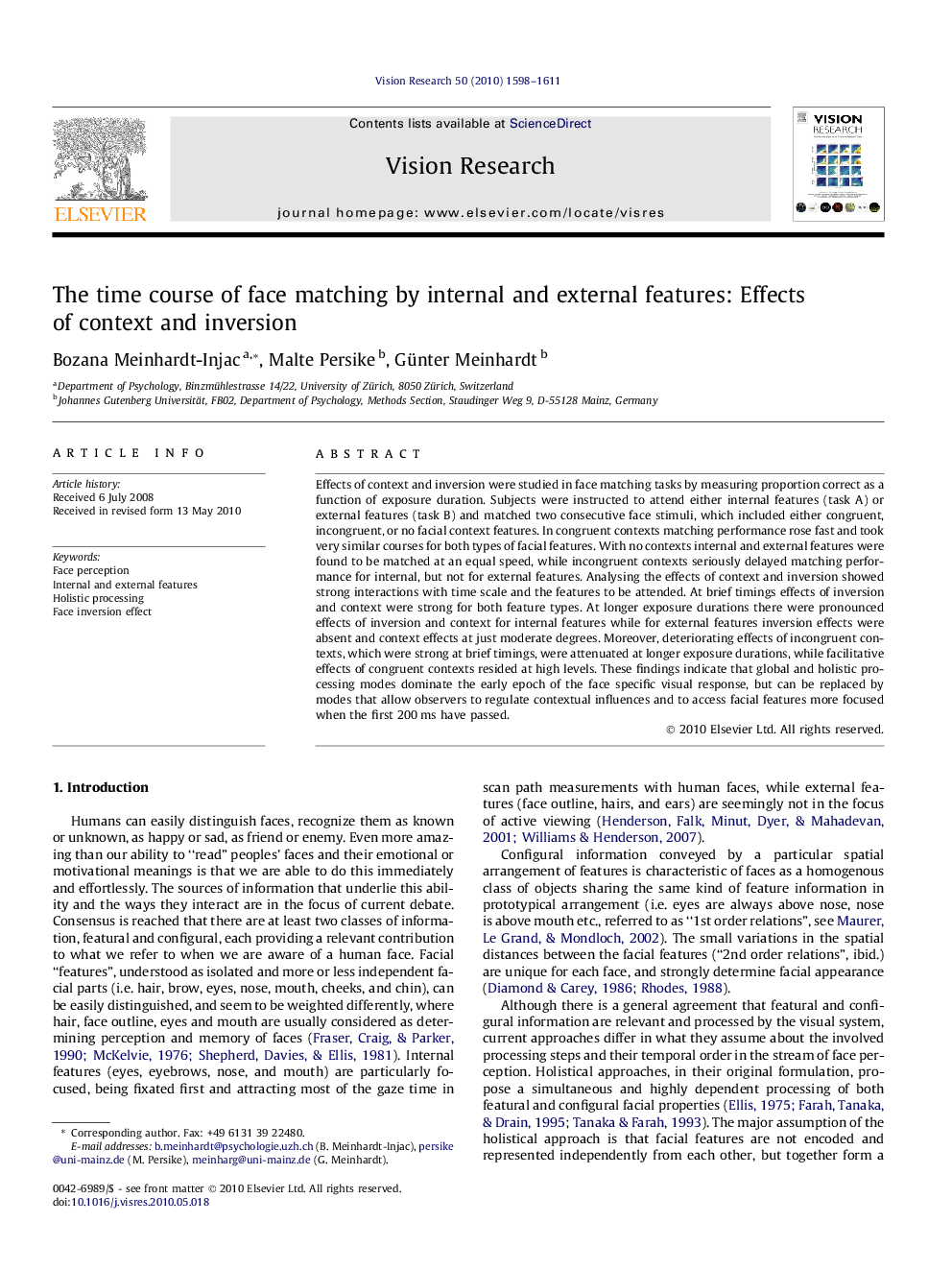| Article ID | Journal | Published Year | Pages | File Type |
|---|---|---|---|---|
| 4034578 | Vision Research | 2010 | 14 Pages |
Effects of context and inversion were studied in face matching tasks by measuring proportion correct as a function of exposure duration. Subjects were instructed to attend either internal features (task A) or external features (task B) and matched two consecutive face stimuli, which included either congruent, incongruent, or no facial context features. In congruent contexts matching performance rose fast and took very similar courses for both types of facial features. With no contexts internal and external features were found to be matched at an equal speed, while incongruent contexts seriously delayed matching performance for internal, but not for external features. Analysing the effects of context and inversion showed strong interactions with time scale and the features to be attended. At brief timings effects of inversion and context were strong for both feature types. At longer exposure durations there were pronounced effects of inversion and context for internal features while for external features inversion effects were absent and context effects at just moderate degrees. Moreover, deteriorating effects of incongruent contexts, which were strong at brief timings, were attenuated at longer exposure durations, while facilitative effects of congruent contexts resided at high levels. These findings indicate that global and holistic processing modes dominate the early epoch of the face specific visual response, but can be replaced by modes that allow observers to regulate contextual influences and to access facial features more focused when the first 200 ms have passed.
